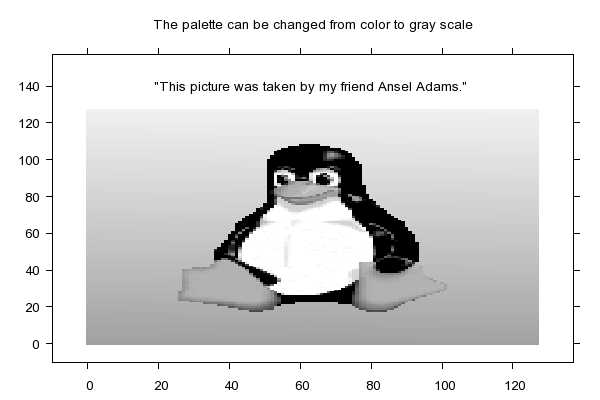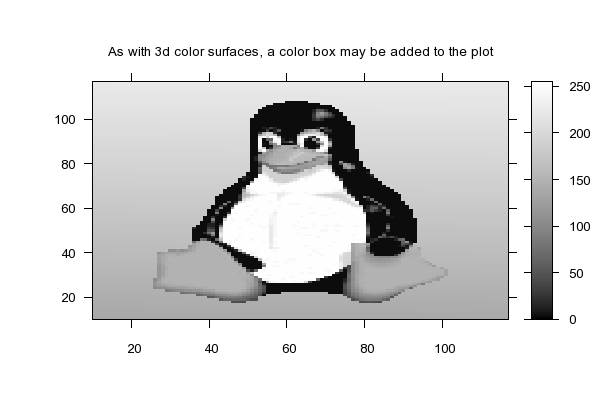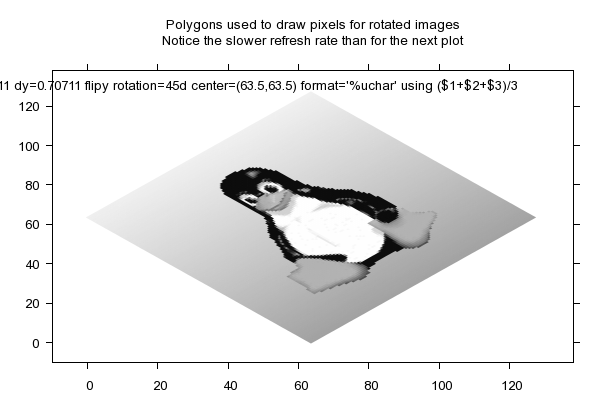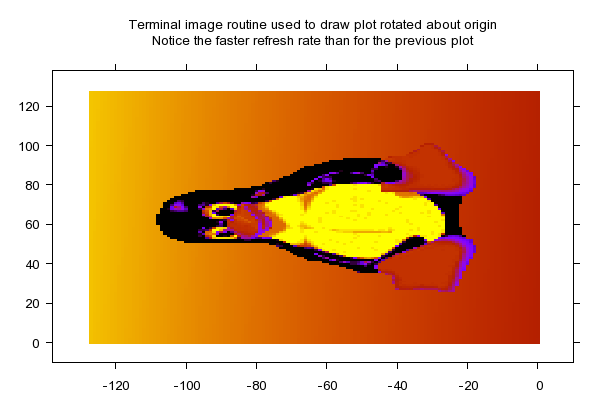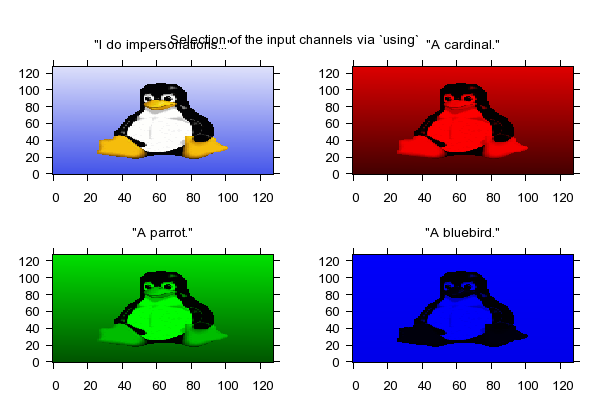
# demo for plotting images using pixels and binary 2d data # # This demo can be used for terminals supporting image display. # Currently supported are: X11, Aqua, postscript, png, pdf, svg, # (e)pslatex, pstex, emf, wxt. # Prepared by Dan Sebald # History: # - Nov 2006 EAM: split into two files # - 9.23. 2003 ds: redone in response to discussion list feedback # - 5. 3. 2003 ds: 1st version print "" print "The plotting styles \`image\` and \`rgbimage\` are intended for plotting" print "images described in a data file either in the convential ASCII format or" print "in a binary format described by the qualifiers \`binary\` and \`using\`." print "All pixels have an (x,y) or (x,y,z) coordinate. These values can be" print "included in the data file or implicitly determined with the sampling" print "\'array\' key word and sampling periods \'dx\' and \'dy\'. The key words" print "\'rotate\' and, for 3d plots, \'perpendicular\' control orientation." print "\nThe data for this image was stored as RGB triples, one byte per channel," print "without (x,y) coordinate information. This yields a most compact file." print "The plotting command is displayed on the graph." print "" set title "Larry Ewing's GIMP penguin on vacation basking in\nthe balmy waters off the coast of Murmansk" set xrange [-10:137] set yrange [-10:157] set label "\"I flew here... by plane. Why? For the halibut.\"" at 64,135 center plot 'blutux.rgb' binary array=(128,128) flipy format='%uchar' with rgbimageClick here for minimal script to generate this plot


